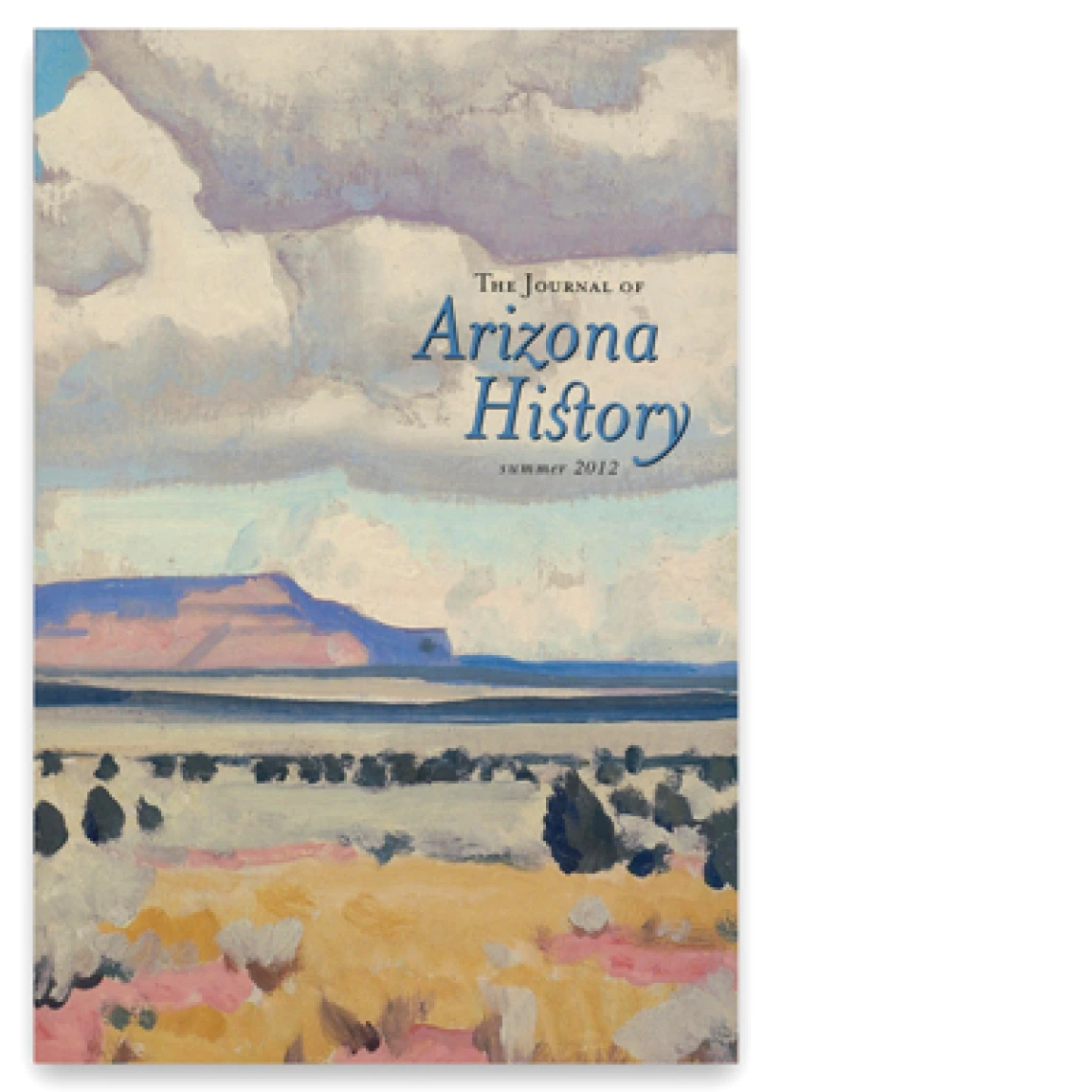
A photo of the cover of the 2012 Journal of Arizona History.
When
Where
Bruce Dinges delivers the opening talk in the Reading Arizona Lecture Series being held in conjunction with Special Collections’ current exhibition “Arizona 100: Essential Books for the Centennial.”
Inspired by Arizona’s Centennial, last year a group of seven bibliophiles set out to develop a readily accessible list of fiction and non-fiction books that define Arizona. Surveying more than 200 titles from Spanish times to the present, the final 100 titles were selected for having “diverse geographical, cultural, and political literary merit” for Arizona.
The current edition of The Journal of Arizona History presents the culmination of this yearlong effort and offers an in-depth bibliography of the selected titles with a summary, assessment of significance, and suggestions for further reading for each title. Special Collections’ exhibition and related lecture series is an opportunity for the community to participate in this statewide literary project.
With more than 30 years’ experience in reviewing, recommending, and discussing Arizona’s literary tradition, Bruce Dinges was one of the seven selectors for the “Arizona 100” bibliography. In addition to his role as editor-in-chief of The Journal of Arizona History, Dinges is currently executive director of the Arizona History Convention, has been a member of the Writers of the Purple Sage program, a contributor to the Southwest Books of the Year program, and served on the editorial advisory board of the Journal of the West.
In his talk, Dinges reflects on the extensive, and sometimes surprising, process of selecting a collection of emblematic works that, if read collectively, express who and what Arizonans are. Although some authors were immediately included, notably Edward Abbey, Byrd Baylor, and Barbara Kingsolver, other works called for review and re-reading. Dinges recalls one example that the selectors initially thought was a shoo-in: Cormac McCarthy’s Blood Meridian. After a close re-read, however, the selectors realized that, as only about 30 pages of the novel were set in Arizona, the work was more about the region than the state. For that reason the title, although a great Southwest novel, does not appear on the “Arizona 100” bibliography.
Dinges shares the story of other titles that warranted discussion and debate among the selectors. As a community literary project, the audience is encouraged to ask questions about the selection process and present alternative views on what was, and was not, included in the “Arizona 100” bibliography.
Related exhibit
Arizona 100: Essential Books for the Centennial
Related coverage
Book events
